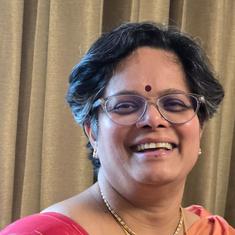The riots are thought to have broken out after an allegedly provocative image was circulated on social media and messaging networks. The police hope to curb the violence by preventing users from accessing the internet.
The internet blockout in Vadodara is not total – landline connections remain intact. But it comes after several smaller instances of violence in the city.
“Messages like these had been circulating for long before this,” said Trupti Shah, a Vadodara-based human rights activist, citing instances of communal messages circulating about Muslims attending garbas during the Navratri festival. The hardline Vishwa Hindu Parishad and Bajrang Dal organisations last week said they had formed squads to prevent Muslims from attending these events because they feared that Muslim men would use this as the opportunity to court Hindu women and convert them to Islam.
“We even wrote to the chief minister about this on September 24," said Shah. "This action is too little too late.”
The solution, she suggested, is not to stop services "but to find out who is spreading the messages and stopping them”.
Others echo her concern.
“Complete stoppage of access to the internet may result in people not being able to share information that is necessary or that could reduce the likelihood of riots itself,” said Apar Gupta, a lawyer in Delhi who specialises in technology and media issues. “This is why you block websites and not access by itself.”
Added Sunil Abraham, director of the Centre for Internet and Society, “The moment you cut internet overall, people depend on rumours and come out on the streets. So the more you are able to keep people comforted and use existing infrastructure to counter inciting speech, they will stay inside.”
While access to mobile networks is regularly cut off in Jammu and Kashmir in an attempt to quell violence, this may be the first time that any other state government has suspended access in response to the threat of communal violence.
This is significant given that several tense incidents in the recent past have been blamed on the circulation of threatening messages and derogatory images.
In 2012, warning messages sent to people from the North East states living in Bangalore prompted a mass exodus, aided by the authorities, who arranged special trains for them to return home. A year later, the Muzaffarnagar riots in Uttar Pradesh are said to have been triggered by a video showing people of a certain community being beaten up. (However, only local political leaders were charged for the riots, not the original disseminators of the video.)
Unlike in Bangalore, the Gujarat government here did not choose to block access to specific websites or content, but instead decided to withdraw access to the entire medium.
This, activists say, sets an uncomfortable precedent.
Unclear legal ground
Telecom operators have service contracts with the central and not state governments, so any suspension order can come only via the Department of Telecommunications. Their Unified Access Service Licence Agreement notes that only the Government of India can issue an order to telecom companies to suspend coverage in certain areas under extraneous circumstances.
A report by the Hindustan Times suggested that the centre had not been contacted. Scroll could not independently verify under what authority the Gujarat police issued this order.
However, to ensure telecom compliance, the police invoked Section 188 of the Indian Penal Code, which relates to disobedience to an order given by a public servant.
“Technically speaking, when you look at the law, the relevant law that applies here is the IT Act,” said Pavan Duggal, a lawyer specialising in the field of cyberlaw. “This is the mother legislation to deal with the electronic format, including surveillance and blocking.”
Section 69A of the IT Act covers blocking access of information through a computer source. A computer source, said Duggal, is a large term including all kinds of communication devices.
It seems there is no clear law that would cover blocking an entire medium.
“In terms of a legal process, I have not seen one which stops internet services in an entire area for about three days,” said Gupta. “It is not as if nobody buys the argument that state has to do something about this, but it has to be through a legal process, which has safeguards.”
Free expression?
The key, both agree, is to have the order in writing so that it can be evaluated in a court of law.
“In a country like India it is very important to ensure that internet does not become a tool for dissemination of communal hatred,” said Duggal. “If for that purpose, some steps have to be taken to prevent communal violence, then that is the call of the hour. However, studious efforts must be taken to document the reasons for doing the same. It should not be arbitrary or without basis.”
Given that freedom of expression is such a fraught issue in the country, it becomes even more important to document the entire process of suspension.
“For all such actions, there are the touchstones of necessity and proportionality,” said Gupta, who supports blocking access only if there is a direct incitement to violence and not simply for noxious content. “I would question blocking access to service as opposed to specific content. But I would also want this to go through a legal process which spells out the reason for suspension. This can be tested in court of law or judiciary.”
But even if the order was valid and constitutional, there is no guarantee that preventing access to the internet can halt violence entirely.
“Social media itself is at most five or six years old, but riots happened before that,” said Gupta. “Communication and coordination is needed by people who riot. It is not an isolated video or website or image that causes violence.”










